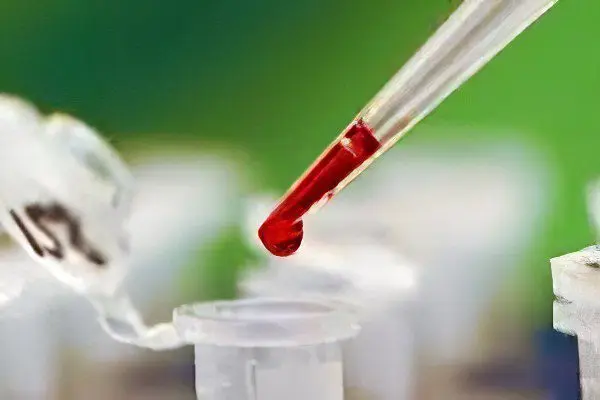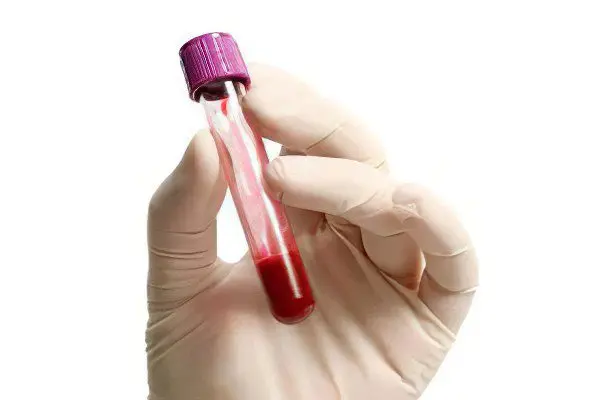Contents
What does ALT in the blood show?

Alanine aminotransferase, or ALT for short, is a special endogenous enzyme. It is included in the transferase group and the aminotransferase subgroup. The synthesis of this enzyme takes place intracellularly. A limited amount enters the bloodstream. Therefore, when a biochemical analysis shows an increased content of ALT, this indicates the presence of a number of abnormalities in the body and the development of serious diseases. Often they are associated with the destruction of organs, which leads to a sharp release of the enzyme into the blood. As a result, the activity of alanine aminotransferase is also enhanced. Establishing the extent of necrosis or the extent of tissue damage based on this is difficult because the enzyme is not organ specific.
Alanine aminotransferase is found in many human organs: kidneys, heart muscle, liver, and even skeletal muscles. The main function of an enzyme is to exchange amino acids. It acts as a catalyst for the reversible transfer of alanine from the amino acid to alpha-ketoglutarate. As a result of the transfer of the amino group, glutamic and pyruvic acids are obtained. Alanine in the tissues of the human body is necessary, as it is an amino acid that can quickly turn into glucose. Thus, it is possible to obtain energy for the functioning of the brain and central nervous system. In addition, among the important functions of alanine is the strengthening of the body’s immune system, the production of lymphocytes, and the regulation of the metabolism of acids and sugars.
The highest activity of alanine aminotransferase was found in the blood serum of men. In women, processes involving the enzyme proceed more slowly. The highest concentration is noted in the kidneys and liver, followed by skeletal muscles, spleen, pancreas, erythrocytes, lungs, heart.
What is analysis used for?
The largest amount of transferase was found in the liver. This observation is used to detect diseases of this organ that do not have external symptoms. ALT, unlike many other components considered in the biochemical analysis of blood, has been studied most fully. Therefore, it can be used to identify even minor problems in the body. In some cases, the amount of ALT is compared with the volume of other elements in the blood. This allows you to draw conclusions about the presence of pathologies.
For example, an enzyme such as aspartate aminotransferase or AST is often used. It is also synthesized intracellularly, and a limited amount enters the bloodstream. Deviation from the standard established in medicine for the content of aspartate aminotransferase, as in the case of alanine aminotransferase, is a manifestation of deviations in the work of some organs. The most complete picture of the nature of the pathology allows you to get the correlation of the contained amount of both enzymes. If there is an excess of alanine aminotransferase over aspartate aminotransferase, this indicates the destruction of liver cells. The level of AST rises sharply in the later stages of the disease of this organ, such as cirrhosis. When the level of aspartate aminotransferase exceeds the content of alanine aminotransferase, problems with the heart muscle are observed.
Additional diagnostic methods allow to confirm the presence of the disease and the degree of organ damage. However, ALT is an accurate indicator; in some cases, it can even be used to establish the stage of the disease and suggest possible options for its development.
When is an ALT test ordered?

The volume of alanine aminotransferase content is determined as part of a general biochemical blood test. Often only one type of examination is prescribed, when there is no need to use additional methods. They are tested for ALT. This is due to the selective tissue specialization that the enzyme has.
The amount of alanine aminotransferase in liver problems helps to identify them even before the appearance of the most characteristic symptom – jaundice. Therefore, the doctor prescribes an analysis for ALT most often in order to check for damage to this important organ as a result of taking medications or any other substances that are toxic to the body. Also, the study is carried out with suspicion of hepatitis. ALT analysis is mandatory in the presence of symptoms such as increased fatigue and weakness of the patient. He loses his appetite, often feels nausea, turning into vomiting. Yellow spots on the skin, pain and discomfort in the abdomen, yellowing of the whites of the eyes, light-colored stools and dark urine can all be signs of liver disease. In such cases, this analysis is required.
ALT can be compared with AST for more information on the causes of liver damage. This is done if the number of enzymes significantly exceeds the norm. The ratio of AST to ALT is known in medicine as the de Ritis ratio. Its normal value ranges from 0,91 to 1,75. If this indicator becomes more than 2, then damage to the heart muscle is diagnosed, which occurs with the destruction of cardiomyocytes. Myocardial infarction is also possible. The de Ritis coefficient, not exceeding 1, indicates liver disease. Moreover, the lower the value of the indicator, the greater the risk of an adverse outcome.
ALT analysis can be used not only as a diagnostic method, but also during treatment. This allows you to determine the dynamics of the course of the disease and identify improvements or deterioration in the patient’s condition. An ALT test is necessary if factors contributing to liver disease are present. These include the abuse of alcoholic beverages or drugs that destroy the cells of the body. If the normal amount of alanine aminotransferase in the blood is exceeded, other drugs are prescribed. It is imperative to check the amount of ALT if the patient has been in contact with patients with hepatitis or has recently had it himself, has diabetes and is overweight. Some people are predisposed to liver disease. They are also shown an analysis for ALT.
When it is carried out, either venous or capillary blood is used. In order to obtain reliable results, certain requirements must be met. First, do not eat 12 hours before the date and do not drink alcohol for a week. Even a small amount of food can make a big difference. Secondly, within half an hour before the analysis, stop smoking, do not worry, avoid moral and physical overstrain. Results are usually ready a day after delivery.
The norm of ALT in the blood in men and women

Alanine aminotransferase (ALT, or ALT) – marker enzymes for the liver.
Aspartate aminotransferase (AST, or AST) – marker enzymes for the myocardium.
The amount of the enzyme alanine aminotransferase in the blood is measured in units per liter.
ALT (AlAT) in children
ALT in children varies with age:
In newborns up to 5 days: ALT should not exceed 49 U / l. (AST up to 149 U / l.)
For children up to six months, this figure is higher – 56 U / l.
At the age of six months to a year, the amount of ALT in the blood can reach 54 U / l
From one to three years – 33 U / l, but gradually the normal amount of the enzyme in the blood decreases
In children from 3 to 6 years old, its upper limit is 29 U / l.
At 12 years of age, the content of alanine aminotransferase should be less than 39 U / l
In children, minor deviations from the norm are allowed. This is due to uneven growth. Over time, the amount of enzyme in the blood should stabilize and approach normal.
ALT (AlAT) in adults
Enzyme | Norm for men | Norm for women | In mmol/l |
ALT (ALAT) | do 45 units/l. (0,5–2 µmol) | do 34 units/l. (0,5–1,5 µmol) | 28 – 190 mmol / l (0,12-0,88) |
AST | up to 41 U/l | up to 31 U/l | 28 – 125 mmol / l (0,18-0,78) |
Enzyme levels
Enzyme levels | What diseases increase AST and ALT? |
|
|
But the results of the analysis for ALT are often far from the established norms. This may be due not only to the presence of inflammatory processes in the body, but also to other factors. Elevated levels of alanine aminotransferase can be triggered by taking aspirin, warfarin, paracetamol and oral contraceptives in women. Therefore, the doctor should be aware of the use of such drugs before testing for ALT. Medicines based on valerian and echinacea have a similar effect. Unreliable test results may be caused by increased motor activity or intramuscular injections.
ALT elevated in the blood

The amount of alanine aminotransferase in the blood is considered elevated if it exceeds the established norm, especially by tens, and in some cases hundreds of times. Depending on this, the presence of the disease is determined. With an increase in the level of ALT by 5 times, myocardial infarction can be diagnosed, if it reaches 10-15 times, we can talk about the deterioration of the patient’s condition after an attack. The value of the de Ritis coefficient in this case also changes upwards.
Hepatitis provokes an increase in ALT in the blood by 20-50 times, muscular dystrophy and dermatomyositis – by 8. Gangrene, acute pancreatitis is indicated by an excess of the upper limit of the indicator by 3-5 times.
It is possible not only to increase the content of alanine aminotransferase in the blood. Its too low amount is associated with a lack of vitamin B6, which is part of this enzyme, or with complex inflammatory processes in the liver.
What does an increase in ALT mean?
An increase in ALT indicates the course of inflammatory processes in the body. They can be caused by the following diseases:
Hepatitis. This inflammatory liver disease can present in several forms. For chronic or viral hepatitis, the excess of the level of alanine aminotransferase in the blood is insignificant. In hepatitis A, ALT analysis makes it possible to detect the infection in advance. The amount of enzyme in the blood increases a week before the first external manifestations of the disease appear in the form of jaundice. Viral or alcoholic hepatitis is accompanied by a pronounced increase in ALT levels.
Liver cancer. This malignant tumor is often formed in patients with hepatitis. Analysis for ALT in this case is necessary both for diagnosing the disease and for making a decision on the surgical decision. When the level of alanine aminotransferase significantly exceeds the norm, surgical intervention may not be possible, since the risk of various complications is high.
Pancreatitis. The presence of this disease is also indicated by the level of ALT. Its increased amount indicates an exacerbation of pancreatitis. ALT analysis for patients with this diagnosis will have to be carried out periodically throughout their lives. This will help to avoid attacks of the disease and monitor the progress of treatment.
Myocarditis. It manifests itself in lesions of the heart muscle. Its main symptoms are shortness of breath, rapid fatigue of the patient and an increased content of ALT in the blood. To diagnose this disease, the level of AST is determined, and then the de Ritis coefficient is calculated.
Cirrhosis. This disease is dangerous because for a long time it may not have pronounced symptoms. Patients quickly get tired, feel tired. Less often there are pains in the area of a liver. In this case, cirrhosis can be determined by the elevated content of ALT in the blood. The amount of enzyme in the blood can exceed the norm by 5 times.
Myocardial infarction. This disease is a consequence of impaired blood flow, resulting in necrosis of the tissues of the heart muscle. In the case of an uncomplicated myocardial infarction, the ALT level rises slightly compared to AST, however, it can be used to determine an attack.
Reasons for the increase in ALT

Taking a number of medicinal or herbal preparations – barbiturates, statins, antibiotics;
frequent use of fast food before taking an analysis for ALT;
muscle damage;
drinking alcohol less than a week before blood sampling;
non-compliance with the basic rules for passing the analysis, including the sterility of the procedure;
increased emotional or physical stress;
carrying out shortly before the analysis of catheterization of the heart muscle or other surgical intervention;
steatosis – a disease that manifests itself in the accumulation of fat cells in the liver, most often occurs in overweight people;
necrosis of a malignant tumor;
conducting chemotherapy;
taking drugs;
lead poisoning of the body;
psychological shock;
mononucleosis – an infectious disease that manifests itself in a change in the composition of the blood, damage to the liver and spleen;
hepatitis.
ALT is elevated during pregnancy
In women, the amount of alanine aminotransferase is limited to 31 U / l. However, in the first trimester of pregnancy, a slight excess of this value is possible. This is not considered a deviation and does not indicate the development of any disease. In general, ALT and AST levels should be stable throughout pregnancy.
A slight increase in the number of enzymes of this group is observed with gestosis. In this case, they have a light or medium severity. Preeclampsia is a complication that occurs in late pregnancy. Women experience weakness, dizziness and nausea. Their blood pressure rises. The greater the deviation of ALT from the norm, the more severe the preeclampsia. This is the result of too much stress on the liver that it cannot handle.
How to lower ALT in the blood?
It is possible to reduce the content of alanine aminotransferase in the blood by eliminating the cause of this phenomenon. Since diseases of the liver and heart are the most common factor in increasing ALT, it is necessary to start with their treatment. After a course of procedures and taking the appropriate drugs, a biochemical blood test is repeated. With proper treatment, ALT levels should return to normal.
Sometimes special drugs are used to lower it, such as hefitol, heptral, duphalac. They should be prescribed by a doctor, and the reception is carried out under his supervision. Most drugs have contraindications that must be considered before starting treatment. However, such remedies do not eliminate the underlying cause of the increase in ALT. Some time after taking the drugs, the level of the enzyme may change again. Therefore, it is necessary to contact a qualified specialist who will make the correct diagnosis and prescribe the appropriate treatment.









